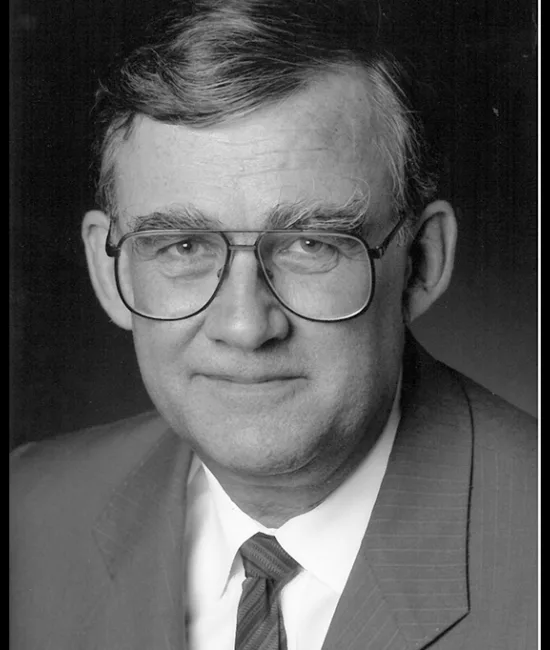Ian S. Thompson
How did you get your start in the mineral industry?
As a very active child I was sent to boys’ camps each summer in the Haliburton area, eventually instructing in canoeing, swimming and out-tripping. I grew up in a small town where several geologists known to my family were living. Dr. J.B. Tyrrell, the famous geologist who mapped the Barrens, was its most famous son. I received his scholarship to enter U of T's Honours Geological Sciences course in 1954.That summer I worked for Conwest Exploration in the Manitouwadge [GECO] exploration camp and this determined that I would select geology over forestry as my chosen outdoor career. Subsequent summer jobs entailed stream sediment sampling in New Brunswick and mapping at Temagami Mines. In 1962 I was hired as a field geologist by Dr.D.R. Derry, who had just started his consultancy, after retiring as V.P. Exploration for Rio Algom and earlier as chief geologist for Ventures Ltd. [later Falconbridge] My early work was in the Shield in Ontario and Quebec, but also regional geochemical programs in Eire, Ecuador and in Belize. Derry's major client was Thayer Lindsley [founder of Ventures], thus I was fortunate to examine other gold and base metal deposits beyond Canada.
What was the most fulfilling project you ever worked on, and why?
The discovery of the Tynagh lead-zinc [copper] mine in Ireland by Northgate in late 1961, attracted lots of Canadian exploration companies. Three additional discoveries were made within two years; Silvermines, Gortdrum, and Keel.
The Lower Carboniferous limestone hosts these deposits; basal sandy and shaly, changing upwards to normal bedded limestones and to upper massive reef limestones. Inliers of Devonian sandstone project through the limestones, which are often faulted against them by Permian movements, which have localized the ore. Glacial drift blankets Ireland, resulting in sparse outcrop.
Our Syndicate selected 24 areas over postulated faults separating Carboniferous limestone from Devonian sandstone. Stream sediment samples were collected at 1000 - foot intervals where streams crossed fault lines and analysed for cold- extractible zinc. Anomalies were checked by stream and soil sampling and by ground geological inspection. Prospecting Licences were granted for 6 areas.
In the 24th area examined, one sample, 3000 feet downstream from an old limestone quarry, led to the discovery of a 2000 x 700- foot zinc soil anomaly just north of Tipperary in Gortdrum Townland.
An Induced Polarization Survey outlined a chargeability anomaly over the soil anomaly. Discovery Hole G-6 cut 234 feet assaying 1.63% Cu, 1.21 oz. Ag/ton. The limestones are intruded by clay- altered feldspar porphyry dikes bearing the mineralization.
By 1968, a total of 121 holes delineated 4,191,000 tons grading 1.19% Cu, 0.75 oz Ag /ton. Mercury, later found in smelter concentrates, was estimated to grade 1.5% -2% Hg in the deposit. Gortdrum Mines produced ore from its open pit for 8 years.
I.S.Thompson; CIMM Vol.70, 1967 pp 85-92
